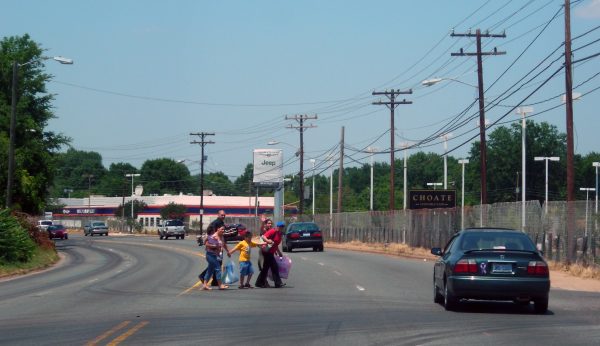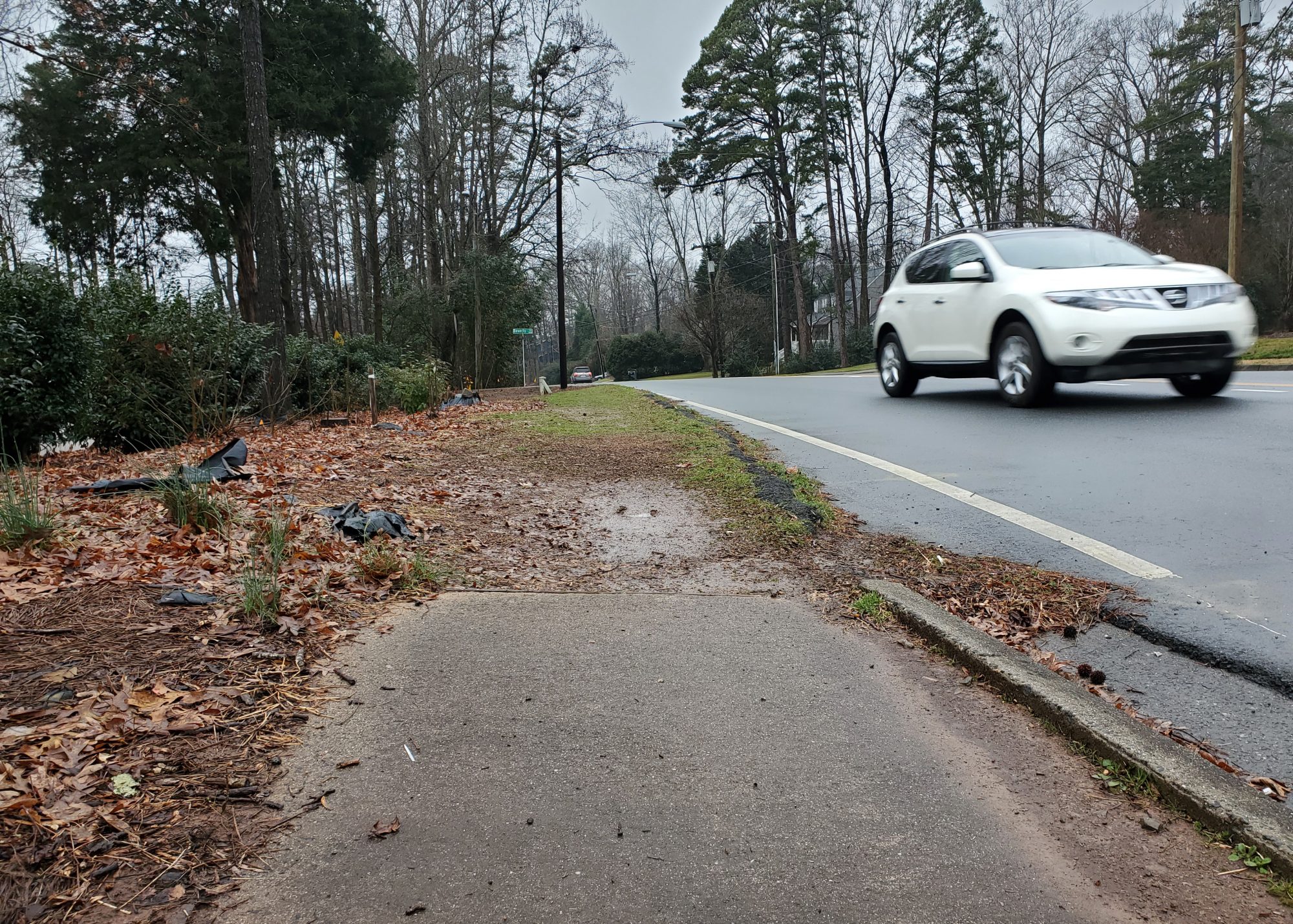Report: Charlotte’s streets are dangerous for pedestrians

It’s increasingly dangerous for people to walk in the Charlotte area, according to a new, annual report – a trend that’s mirrored in almost every city nationwide.
“Dangerous by Design,” published by Smart Growth America, uses federal data to rank metro areas by pedestrian fatalities. The Charlotte region ranked as the 34th most dangerous metro area to walk, with 421 people struck and killed by vehicles in the decade from 2010-2019. Raleigh ranked just behind, with 182 fatalities (because the overall ranking is controlled for population and how many people walk, somewhere with a smaller number of fatalities can still rank relatively high).
Charlotte’s ranking is essentially unchanged from the last Dangerous by Design report, when Charlotte ranked 33rd. But the city’s “pedestrian danger index,” a statistic that controls for population and the average share of people in that area who walk to gauge how dangerous an area is, jumped by nearly 18%.
“This is a trend that is not isolated to certain parts of the country,” said Steve Davis, communication director for Smart Growth America. “Almost everywhere in the country got worse.”
And “almost everywhere” really means almost everywhere: 49 out of 50 states, and 84 out of 100 large metro areas, saw pedestrian fatalities increase. Overall, from 2010 to 2019, the average number of pedestrian fatalities jumped a whopping 45% (fatalities among drivers and passengers increased less than 4%, for comparison).
In 2010, a total of 4,302 people died after being hit by a vehicle while walking. In 2019 (the last full year data is available – federal statistics processing was delayed last year, SGA said), 6,237 people died.

Where the sidewalk ends: Sardis Road North, one of many sidewalk gaps in Charlotte. Photo: Ely Portillo
“We’re going in the wrong direction,” Davis said. Preliminary data suggests 2020 was no different, with an 8% increase in fatalities despite people staying home for the coronavirus pandemic.
The possible reasons are myriad. More people are walking as cities grow denser, but infrastructure like sidewalks and complete streets hasn’t caught up in many places. Cell phones are ubiquitous in drivers’ hands, leading to more distraction. SUVs and pickups have eclipsed cars as the most popular passenger vehicle, making for deadlier collisions with bigger, heavier vehicles.
There’s no one, clear explanation. But there are several trends:
- Nine of the top 10 most dangerous states for pedestrians are in the Sun Belt (Delaware is the lone exception). The Orlando region ranks as the deadliest place for people to walk.
- Fatalities occur disproportionately among Black people, Native Americans and people over 50 (and especially among those ages 75 and up).
- People walking in the lowest-income tracts have more than twice the risk of being struck and killed as people walking in the highest-income tracts. The lower the average income where you live, the higher your risk of dying in a pedestrian-vehicle crash.
- Although SGA says better data about where crashes occur, the condition of roadways and the exact circumstances are needed, speed is the most important factor in fatalities. Your risk of being killed if you’re struck by a vehicle going 20 mph is about 5%. At 30 mph, it rises to 45%. At 40 mph, your risk of death hits a whopping 85%.
To read the full report, click here.